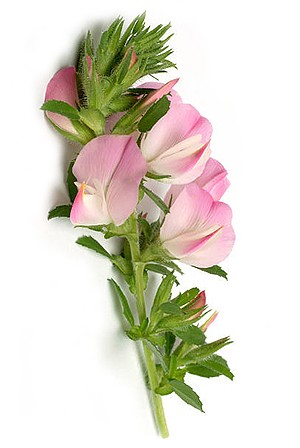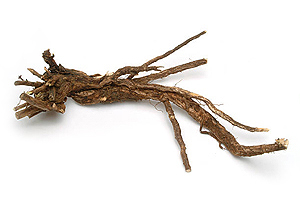No products
Spiny restharrow - 50g
(Radix Ononis spinosa)
Spiny restharrow (Ononidis spinosa) promotes the excretion of uric acid, as a diuretic in urinary and biliary gravels, and water retention in the body during inflammation of the kidneys and urinary tract, the treatment of rheumatism and gout, affects the lymphatic system...
![]()
Content |   |
Commonly calledSpiny restharrow or just Restharrow Latin (botanical) nameOnonis spinosa StorageStore in a dry place at a temperature up to 25°C |
Description of herb
The Spiny restharrow (Ononis spinosa) - a semi-shrub growing to a height of about 60 cm with pink flowers that bloom in July and August and unpleasant thorns - grows in the temperate zone of Europe to an altitude of 1500 meters, in North Africa and the Middle East.
Its root, which is harvested in autumn (October to November) and dried at temperatures up to 50°C, contains substances that support kidney function. It has a diuretic effect, acts on the mucous membranes of the bronchi, helps to excrete water, improves the function of the lymphatic system and skin.
Healing effects
The part used for medicinal purposes is the root, which contains about 0.2% of essential oils (flavonoids, saponin ononide), which promotes the excretion of uric acid, so it is used mainly as a diuretic, eg in urinary and gallstones, water retention in the body or inflammation of the kidneys or urinary tract.
It also has a beneficial effect in the treatment of rheumatism and gout, it has an effect on metabolism, the lymphatic system and the activity of endocrine glands, in chronic skin diseases, hemorrhoids and high blood pressure.
The diuretic effect is mainly attributed to essential oil and mainly to flavonoids and ononide, a substance with a similar chemical structure to licorice glycyrrhizin.
Active substances
- isoflavone glycosides - ononine, saponin ononide, onon, onospin
- tryterpenoid glycosides - cyclitol ononitol
- sucrose
- tannins
- citric acid
- essential oils
Properties
Antirheumatic, diuretic, anti-inflammatory.
Recommended at
- urinary and gallbladder stones
- high blood pressure
- inflammation of the kidneys and urinary tract
- kidney stones
- rheumatism
- hemorrhoids
Preparation and dosing
TEA
Preparation: 7 g of drug per 1/2 l of boiling water. Pour and drain after 20 minutes.
Dosing: 3-4 times a day a cup.
Side effects
Due to the fact that the Spiny restharrow flushes out a lot of minerals from the body, it is advisable to take it only 5 or 6 days a week, and if the treatment lasts longer, it is good to take a break of approximately 1 week after every 3 weeks. It is not recommended for swelling caused by heart or kidney failure.
REMEMBER: Tell all your health care providers about any complementary health practices you use. Give them a full picture of what you do to manage your health. This will help ensure coordinated and safe care.

